Alexander Sergeevich Yakovlev. Father of Soviet "Yastrebkov"
The future aircraft designer was born on April 1 1906 in Moscow. His father was Sergei Vasilyevich Yakovlev, a specialty accountant who served as head of the transport department at the Nobel Brothers oil firm. Mother, Nina Vladimirovna Yakovleva, was a housewife. The family had three children: sons Alexander, Vladimir (1909) and daughter Elena (1907). The parents of Alexander Sergeevich had the title of “hereditary honorary citizens”, which in those years was granted by imperial decree to representatives of the clergy and petty-bourgeoisness.
In 1914, Alexander Yakovlev, having successfully passed the entrance exams in Russian language, arithmetic and the law of God, entered the preparatory class of the Strakhov private gymnasium located on Spasskaya Street. In those years, this gymnasium was considered one of the best in Moscow, it was distinguished by well-equipped classrooms and excellent teachers. After the October Revolution, the gymnasium was merged with the women's school, it became a state school, receiving a new name “United Labor School of the 2 grade No. XXUMX” of the Sokolniki district of the capital. He studied the future famous designer with great eagerness. At the same time, the boy’s favorite subjects were story, literature and geography, he always had excellent grades in these subjects, and in physics, mathematics and chemistry, which more suited his future specialty, he basically got fours. Liked Alexander Yakovlev and drawing, which was quite important for the designer. In this subject, encouraged by teachers and his mother, he managed to achieve great success.
During his studies, Alexander Yakovlev was a rather active student, taking part in public school life, was the head of the class, the chairman of the student committee, for some time he was the editor of a school literary and historical journal and a member of the drama circle. I read quite a lot. He read the works of Jules Verne, Herbert Wales, Jack London, Rudyard Kipling and other authors, he loved books on the history of Russia and, of course, on all sorts of techniques. To technology, he showed particular interest. During his school years he even tried to build a perpetual motion machine, attended classes in the radio circle, where he assembled a radio receiver himself. He mastered carpentry, with passion creating models of locomotives, stations, bridges, railway cars. It was the influence of his uncle, the trainer, at that moment Alexander Yakovlev wanted to follow in his footsteps, becoming a railway engineer.
The event, which forever changed his life, occurred in the 1921 year, when according to the scheme and description from the book Yakovlev he assembled a flying glider model with a wing span of two meters. He successfully tested the built glider in the school hall. From this moment begins his aviation career and endless love for aviation, which eventually made him one of the most prominent aviation designers of the 20th century. He was able to achieve worldwide recognition, thanks to the great desire to create new aircraft, which he was able to carry through his entire life. Later, he himself told about this feeling: “When I built the glider, I was overwhelmed by an overwhelming desire to design the aircraft. Later, I wanted to make another one, but better, then a third ... You build a new plane and think: “If only it flew, I don’t need anything else in my life!”, But when a car is born and a new desire begins to fly, create another plane which would be even better, flew faster ... "
Yakovlev retained this desire to create and create new airplanes for a lifetime, while being able to carry along with them the team, turning people into a group of like-minded people. Already in 1921, he found other aeronautics enthusiasts in school, and in 1922, he independently organized an aircraft modeling circle, his first “design bureau”.
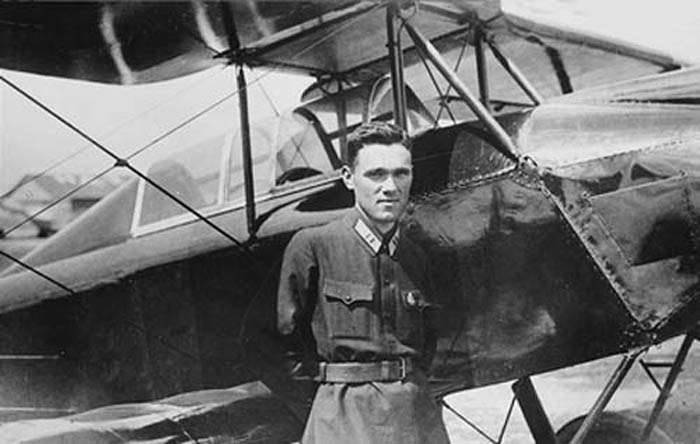
Already in 1924, Alexander Yakovlev created his first full-fledged aircraft - a glider called AVF-10, which managed to receive an award as one of the best Soviet gliders at the all-union competitions held in Koktebel. This glider made its first flight 15 September 1924 of the year. From that moment on, Yakovlev was engaged only in aviation. In 1924, he volunteered to serve in the Red Army, serving in the Air Force Academy named after N. E. Zhukovsky (BBA). Here he was both a simple worker and a mechanic of the flight squad of the academy. In 1927, he designed his first aircraft - AIR-1, the day of the first flight of AIR-1 - 12 in May 1927, is considered the birthday of the Yakovlev Design Bureau. In July of the same year, the first world records of the Soviet Union were set on the AIR-1 aircraft - in terms of distance (1420 km) and duration (15 hours 30 minutes) of flight. For these achievements, Alexander Yakovlev in 1927 was enrolled as a student in the Zhukovsky Air Force Academy out of competition. He continued his studies at the Academy until the 1931 year, while continuing to build light aircraft.
After graduating from the academy in 1931, Yakovlev worked for some time as an engineer at a serial plant, but already in 1932 he built the AIR-6 aircraft, which again attracted the attention of specialists. The aircraft was a tray-type monoplane-parasol of mixed design, distinguished by a closed and quite comfortable cockpit. A special feature of the AIR-6, as well as many of the aircraft of Alexander Sergeevich Yakovlev, was a high mass return, and hence a large flight range. Already in 1933, the AIR-6 aircraft, which was equipped with floats for landing on the water, managed to exceed the official international distance record for seaplanes. And in 1934, several AIR-6 aircraft were able to make a group flight on the route Moscow - Irkutsk - Moscow, which at that time was a great achievement.
Continuing to work on the design of sports aircraft, Alexander Yakovlev created a two-seat sports aircraft AIR-7. The aircraft had a thin wing and a strut monoplane scheme. At the end of the summer of 1932, this machine at the altitude of 1000 meters reached the maximum speed of 332 km / h. For comparison, the armed X-NUMX fighter, built according to a biplane scheme, developed a maximum speed of 5 km / h. The construction of the AIR-286 made it obvious that the monoplane scheme, which gives superiority in flight speed, is more expedient and better suited for combat aircraft. And in 7, the young design team, headed by Alexander Sergeevich, designed and built the UT-1935 training monoplane training monoplane. It was a single-seat aircraft with a standard air-cooled engine that developed the power of the 1 l. with. In the case of installation on the aircraft of the forced engine, which developed the power of 100 l. with. its maximum speed increased to 150 km / h.
Thanks to the invaluable experience that was gained during the design and construction of training aircraft, the design bureau, which Yakovlev supervised, was able to proceed to the development of fighter aircraft. The first such combat vehicle was And 26, which was significantly different from the aircraft of this class created in other country design bureau. He had a wooden wing, duralumin feathering and welded (from pipes) fuselage frame. Gargroths with skinning were installed to better wrap directly over the tubular frame of the fuselage. Like all aircraft of Alexander Yakovlev, the aircraft And the 26 was distinguished by its low weight and thoughtfulness, one might even say elegance, constructive forms, which became its hallmark. The fighter installed a water cooling engine designed by V. Ya. Klimov, which had a small mass and small dimensions. In the forced mode, the engine developed power in the 1240 hp. - A very decent figure for those years. In serial production this combat aircraft went under the designation Yak-1. At an altitude of 3400 meters, the fighter developed a maximum flight speed of 600 km / h, its armament consisted of an 20-mm cannon and two 7,62-mm machine guns. Creating an aircraft Yak 1 was a great achievement for the entire domestic aircraft.
A little earlier, back in 1939, the design bureau, under the leadership of Yakovlev, designed and built the high-speed bomber Yak-2, and then the Yak-4. The last modification with two water-cooled engines developed a speed of up to 567 km / h, which was the maximum value for military aircraft launched in the Soviet Union at that time. The twin-engine bomber Yak-2 and Yak-4 were built just over 200. They managed to take part in the first battles of the Great Patriotic War, but most of them were lost in the first week of hostilities.
Already during the war years, a large amount of work was done to improve the aerodynamics of the Yak-1 aircraft and rational design, which made it possible to design a fighter with a flight weight of 2650 kg and high maneuverability and speed. This aircraft was no less legendary Yak 3. The flight range of this fighter was 900 km. With a forced engine V. Ya. Klimov, the VK 105PF fighter could reach 660 km / h speed, and with an even more powerful 107 VK engine, it could reach 720 km / h. Upon completion of testing the aircraft with the 107 VC engine, a conclusion was drawn up stating that according to the main flight data in the altitude range from the ground to the practical flight ceiling, the aircraft is the best Soviet and foreign fighter aircraft built. This vehicle began to arrive in combat units from 1943 of the year. It was the most maneuverable and lightweight fighter of the Second World War. It was on the Yak-3 that the French volunteer pilots from the famous Normandy-Neman regiment flew.
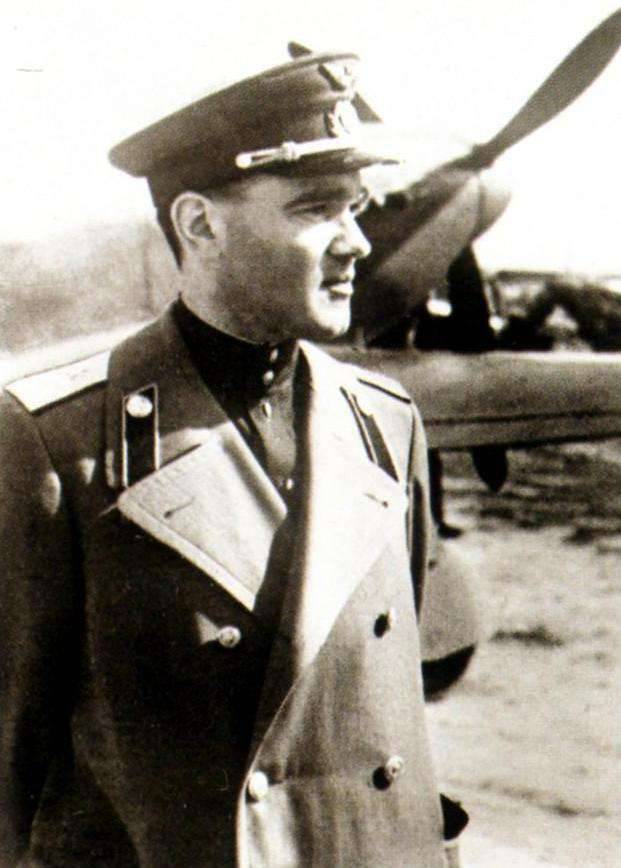
Also during the war years, to provide reliable cover for the bomber aviation of the Yakovlev Design Bureau, an escort fighter was designed that had heavier armament and a longer range than the ordinary Yak-1 and Yak-3 fighters. This aircraft was the Yak-9, which was armed with 37-mm cannon and two large-caliber 12,7-mm machine guns. Fighter range reached 1000 km. During the Great Patriotic War, the Yak-9 fighters were also widely used for attacks against ground targets. For example, the Yak-9T were armed with 45-caliber guns. And the appearance of Yak-9D and Yak-9DD aircraft in the Air Force, which had a range of 1400 and 2200 km, respectively, allowed the Soviet troops to support the offensive, which was especially important at the final stage of the war. Over the years of the war, more than 40 thousands of Yak fighters of various models were built. To compare the no less popular Lavochkin fighters, just over 22 thousands were created. Thousands of Soviet pilots fought on the Yak fighters, winning victories over the German aces on the Messerschmitts and Fokkeulfs in the air, which was Aleksandr Sergeevich Yakovlev’s considerable personal contribution.
Until July, 1946, Alexander Sergeevich, managing his design bureau, simultaneously worked as Deputy Commissar of the Aviation Industry for Experimental Aircraft Building and Science, and since March of the same year - Deputy Minister of Aviation Industry for general issues. In July, 1946, due to heavy workload and employment in the KB, he left this position of his own accord. From 1935 to 1956, he was the chief designer of the design bureau, and from 1956 until his retirement in 1984, he served as general designer.
After the end of the Second World War, aircraft were re-equipped with jet technology. The first jet fighter that entered service in the USSR was the Yak-15 fighter. Behind him in the Yakovlev designed the Yak-17UTI, Yak-23, Yak-25 - the first Soviet all-weather interceptor, high-altitude Yak-25RV, and the first Soviet supersonic spy Yak-27R, followed by a family of supersonic aircraft Yak-28, which included and USSR's first supersonic front-line bomber. The scope of the bureau’s activities was also expanding, as amphibious assault vehicles entered the Soviet Army’s arsenal — the Yak-14 glider and the Yak-24 helicopter, which in 1952-1956 held the title of the world's most heavy-duty.
But Yakovlev and his design bureau became famous not only for military equipment, civil aircraft were also created here. For example, here they gave life to a whole generation of light aircraft: the multi-purpose Yak-12, the Yak-11 and Yak-18 training aircraft, the Yak-30 and Yak-32 training aircraft first in the Soviet Union. From 1960, speaking on the Yak-18P, Yak-18PM, Yak-18PS and Yak-50 aircraft, Soviet pilots many times took the podium at the European and World Aerobatics Championships. Separately, we can mention the passenger aircraft Yak-40, which began transporting passengers in the 1968 year. At that time, it was the only aircraft in the USSR that was certified according to western airworthiness standards and was purchased by the Federal Republic of Germany, Italy and other countries. Later, the OKB will also create the 120-seater Yak-42 passenger aircraft, which was distinguished by its high efficiency, this aircraft is still used by Russian airlines.
Separately, we can mention the vertical take-off and landing aircraft (VTOL). In 1967, during the parade in Domodedovo, the first Soviet VTOL aircraft was shown - the Yak-36. From 1976, the Kiev-class cruisers began to receive combat aircraft of vertical and short takeoff and landing of the Yak-38, which also became the world's first carrier-based aircraft of this type.
Alexander Sergeevich Yakovlev won multiple prizes and awards: six Stalin prizes (1941, 1942, 1943, 1946, 1947 and 1948 years), the USSR State Prize (1977 year), the Lenin Prize (1971 year). He was twice a Hero of Socialist Labor, was awarded the Order of Lenin by 10, two Orders of the Red Banner, the Order of the October Revolution, two Orders of the Patriotic War of the 1 degree, the Orders of the Suvorov of the 1 and 2 degrees, the Order of the Red Star, the Orders of the Labor Union of XNUMX and XNUMX, the Orders of the Red Star, the Orders of the Red Star, the Order of Workers of the XNUMX and XNUMX degrees, the Order of the Red Star, the Orders of Workers of the XNUMX and XNUMX, the Orders of the Red Star, the Orders of the Red Star, the Workers of the XNUMX and XNUMX, In addition, he had foreign awards, in particular, the French officer’s cross of the Legion of Honor and the military cross, as well as the Aviation Gold Medal from the FAI (International Aviation Federation).
21 August 1984, at the age of 78 years, Alexander Sergeevich retired. He lived in Moscow, where 22 died on August 1989, at the age of 83, and was buried in the Novodevichy cemetery of the capital. In total, under the direct supervision of this outstanding aviation designer, more than 200 types of aircraft were created, of which more than 100 went into mass production. At various times, 86 of various world records was set on its aircraft design bureaus.
Information sources:
http://planetavvs.ru/construktori/yakovlev-aleksandr-sergeevitch.html
http://www.warheroes.ru/hero/hero.asp?Hero_id=12893
http://www.yak.ru
Open source materials
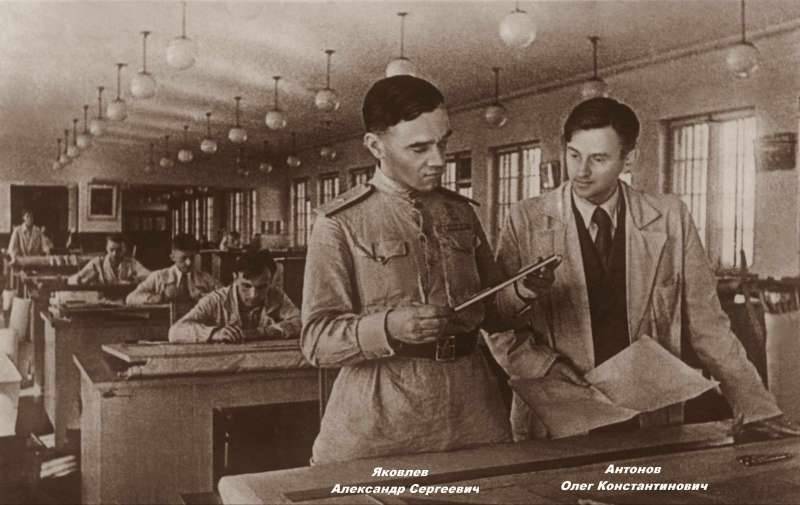
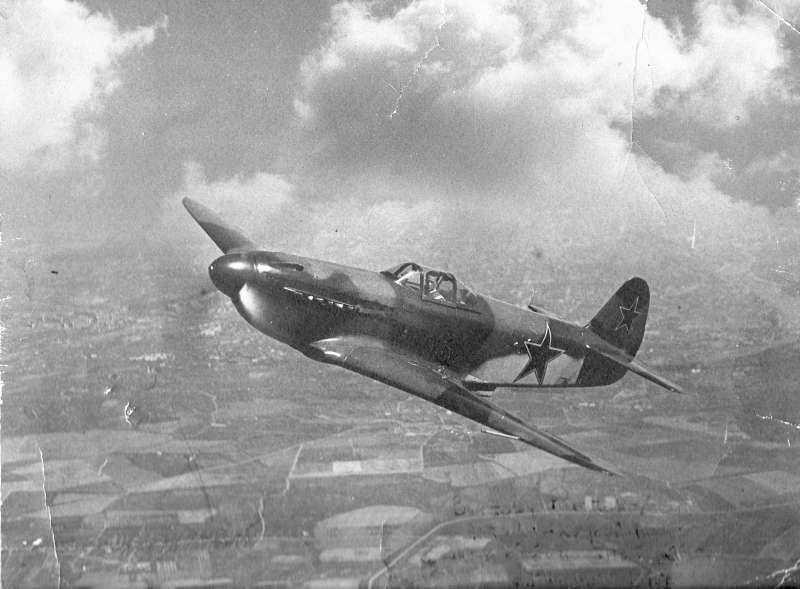
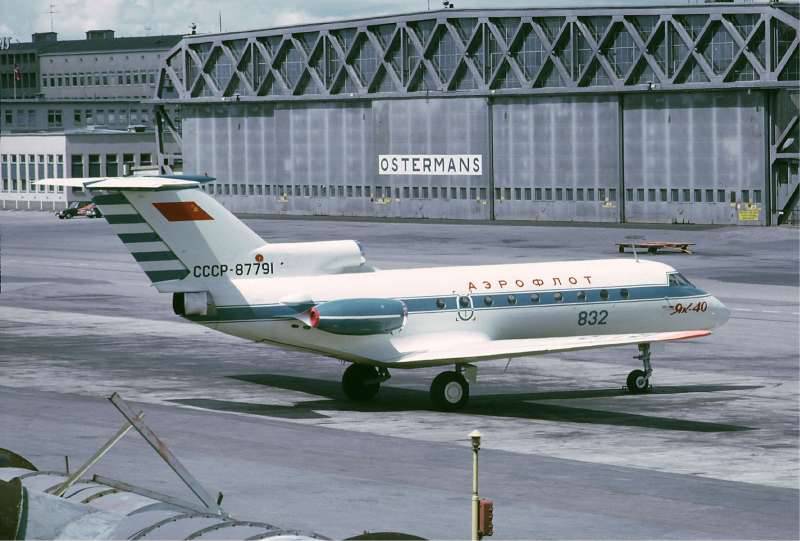
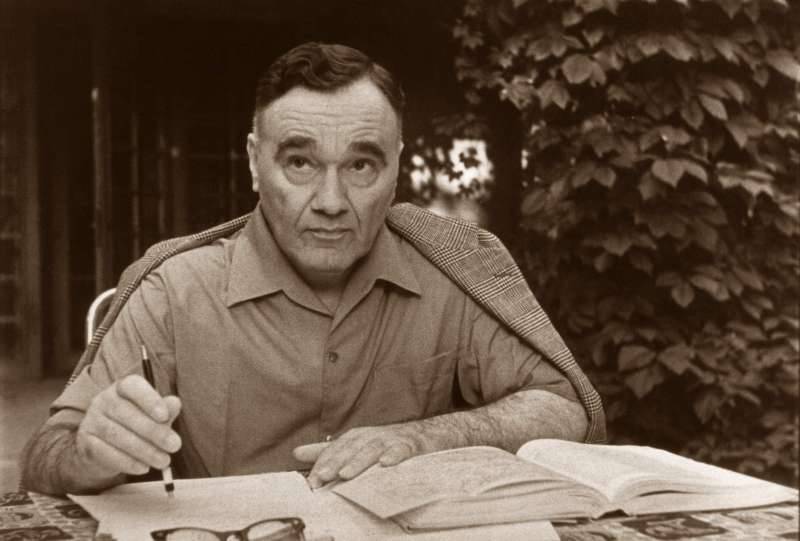
Information